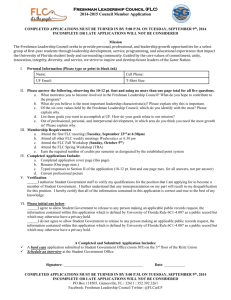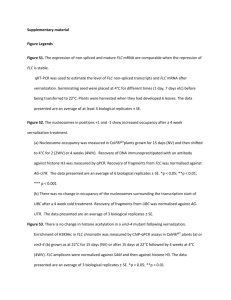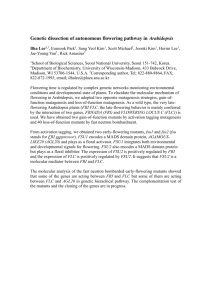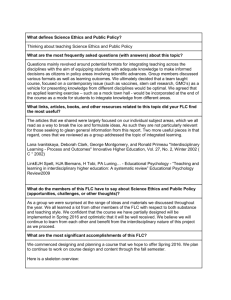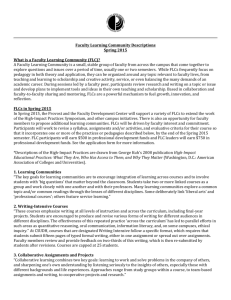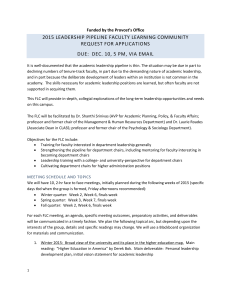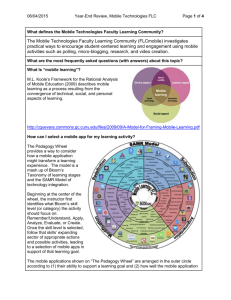Final Report - VERNNATVAR_AT
advertisement
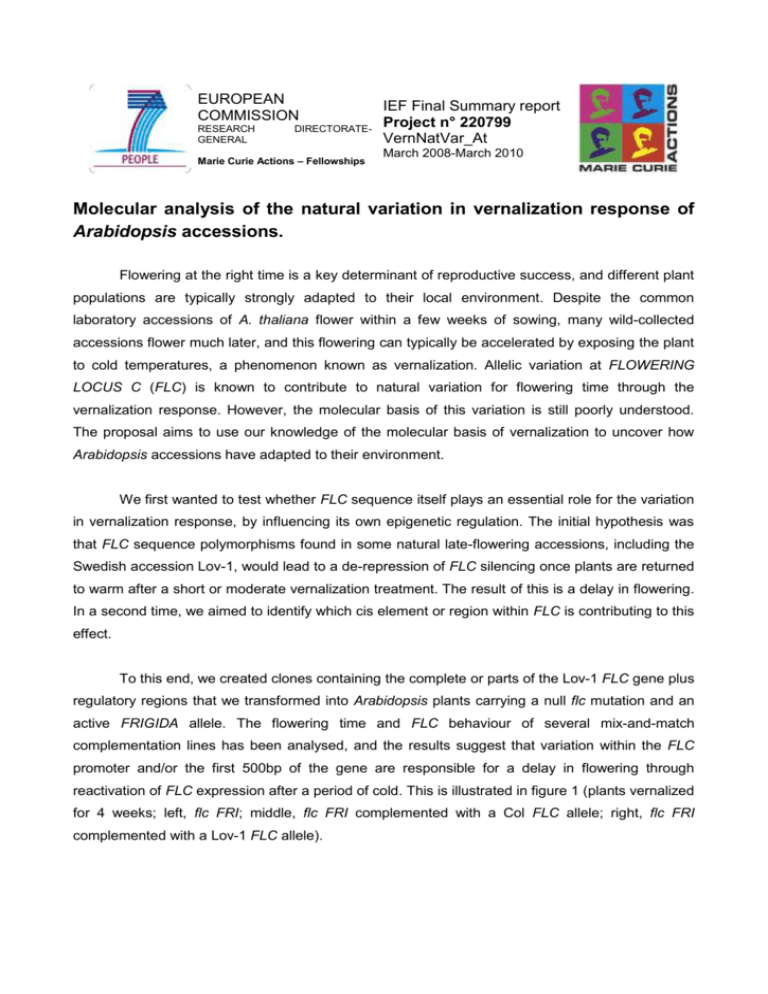
EUROPEAN COMMISSION RESEARCH GENERAL DIRECTORATE- Marie Curie Actions – Fellowships IEF Final Summary report Project n° 220799 VernNatVar_At March 2008-March 2010 Molecular analysis of the natural variation in vernalization response of Arabidopsis accessions. Flowering at the right time is a key determinant of reproductive success, and different plant populations are typically strongly adapted to their local environment. Despite the common laboratory accessions of A. thaliana flower within a few weeks of sowing, many wild-collected accessions flower much later, and this flowering can typically be accelerated by exposing the plant to cold temperatures, a phenomenon known as vernalization. Allelic variation at FLOWERING LOCUS C (FLC) is known to contribute to natural variation for flowering time through the vernalization response. However, the molecular basis of this variation is still poorly understood. The proposal aims to use our knowledge of the molecular basis of vernalization to uncover how Arabidopsis accessions have adapted to their environment. We first wanted to test whether FLC sequence itself plays an essential role for the variation in vernalization response, by influencing its own epigenetic regulation. The initial hypothesis was that FLC sequence polymorphisms found in some natural late-flowering accessions, including the Swedish accession Lov-1, would lead to a de-repression of FLC silencing once plants are returned to warm after a short or moderate vernalization treatment. The result of this is a delay in flowering. In a second time, we aimed to identify which cis element or region within FLC is contributing to this effect. To this end, we created clones containing the complete or parts of the Lov-1 FLC gene plus regulatory regions that we transformed into Arabidopsis plants carrying a null flc mutation and an active FRIGIDA allele. The flowering time and FLC behaviour of several mix-and-match complementation lines has been analysed, and the results suggest that variation within the FLC promoter and/or the first 500bp of the gene are responsible for a delay in flowering through reactivation of FLC expression after a period of cold. This is illustrated in figure 1 (plants vernalized for 4 weeks; left, flc FRI; middle, flc FRI complemented with a Col FLC allele; right, flc FRI complemented with a Lov-1 FLC allele). To uncover the molecular basis of the Lov-1 FLC allele behaviour, we exploited the current knowledge acquired by studying the molecular mechanisms controlling FLC epigenetic silencing in the common laboratory accessions. Notably, previous work suggested that the differential enrichment of a specific histone modification associated with repression (H3K27me3) could play a role in the inability of the Lov-1 FLC allele to maintain a stable repression after cold. We conducted a fine analysis of H3K27me3 profile in Lov-1 FLC chromatin under a different set of experimental conditions with varying lengths of cold treatment, and several times points after return to warm. The results of this analysis suggest that the rates of accumulation of H3K27me3 are lower in Lov1, which requires twice as much time as Col-0 FRI to accumulate similar levels. In addition, a significant fraction of these marks are lost progressively once plants are returned to warm conditions, which could influence the partial loss of FLC silencing seen in Lov-1 in these conditions. We also generated a series of lines expressing tagged proteins involved in the control of vernalization through FLC regulation, which can be used to assess the binding of different trans regulatory factors at Lov-1 FLC. Altogether, the work completed during the Marie Curie fellowship allowed showing that cis variation within FLC sequence contributes to the natural variation in Arabidopsis vernalization response. It demonstrates the importance of the variation in cis regulatory elements in the evolution of a complex naturally selected trait. Dissecting the molecular basis of local adaptation is a major goal in evolutionary genetics and the results from this study suggest that analysis of the variation in vernalization response is likely to provide important insights into adaptation relevant to many biological systems.
